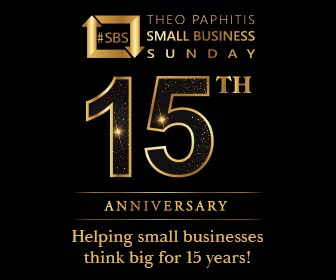How to choose a sun cream
We get it. Sun cream is a modern necessity. No one wants to burn or turn into a cooked lobster. No one wants to destroy their DNA or one day wake up with skin cancer. But choosing a sun cream is often a painful experience of indecision. What makes a good sun cream? What does the SPF mean? What are the symbols on the bottles? What are all those ingredients? Can I avoid the chemicals? Can Coconut Oil protect me better than sun cream? And, what about coral reefs? What a minefield! So, let us break it down and help you make a more informed decision.
What makes a good sun cream?
To put it bluntly, a good sun cream is one that works. Essentially. Here in Europe (yeah, I know the UK isn’t officially Europe any more but we’re in the vicinity and a lot of sun creams available are manufactured in the EU) there are high standards that all companies have to adhere to. It does not matter if the sun cream costs £1 or £100, they all must do what it says on the bottle. In fact, often the ingredients are remarkably similar.
The best sun creams are ones that have broad spectrum UV protection. That means they protect against UVA and UVB. UVA is undetectable and is present all year round at the same intensity. UVB is higher in the summer months and is responsible for the majority of burns (but UVA and UVB actually work together when it comes to burning and premature ageing). So, choose a sun cream that says “Broad Spectrum”.
At the end of the day the best sun cream is one you like. If you don’t like it you won’t use it. Simple.
What does SPF mean?
SPF stands for Sun Protection Factor and it refers to UVB only. The SPF is basically telling you how long you can stay in the sun before you burn. So, for example, if you are like me and tend to burn within 10 minutes but decide to put on an SPF 15 you could go 150 minutes before burning (provided you use it as directed).
SPF 15 blocks 93% of UVB
SPF 30 blocks 97% of UVB
SPF 50 blocks 98% of UVB
While those percentages are not vastly different it helps to think of what they let through rather than what they block. SPF 15 is suitable for those who have darker skin which has a naturally higher sun protection. Those with very fair skin or a history of skin cancer should opt for the higher SPF options. Which is why you find me slathering on SPF 50 every day.
The SPF is based on human tests in a lab where skin without cream is compared with skin applied with cream. Considering most people do not put enough sun cream on I would highly recommend choosing the higher SPF regardless. The correct amount is a teaspoon for your face and a shot glass on your body … and reapplied every 2 hours. It is the reapplication that many people fail to do. Sun cream will rub off on clothing, sand, water and sweat. So, keep applying it.
What do the symbols on the bottle mean?
We have established that SPF is based on the sun protection factor against UVB, but have you noticed the other symbols? Going back to the idea of “broad spectrum” you will see a couple of symbols depending on where the sun cream is manufactured. The first is the letters UVA surrounded by a circle. This UVA seal indicates that the product has reached EU recommendations.
You might also see a star rating. The EU star rating rates UVA protection from 1 to 5. The lower the star rating the lower the UVA protection. All manufacturers in the Europe use this rating and you will rarely see anything below 3 stars. Bear in mind that it is an EU recommendation and not a global one. So, UK manufacturers do not have to put this information on their bottles. The same goes for other manufacturers from elsewhere, but they usually have their own country standards to adhere to. The higher the star rating the higher protection above the EU recommendation of UVA shield the product contains.
Another symbol you will see is the picture of an open jar and a number. This refers to how long it remains active once opened. So, if you open it in the shop to smell and the bottle has a symbol saying 6M, it will expire 6 months from when you opened it in the shop. Most sun cream only has a shelf life of 6-12M. So please do not try to use sun cream from last year: it will not be as effective.
What about all those ingredients?
Reading the ingredient list of products is an art form. The first thing to bear in mind that ingredients are generally standardised with scientific names often Latin based. This is because not everyone in the world speaks English …. Or French …. Or Russian. But scientists all speak science! So even something common and natural will be listed with a fancy scientific moniker. Hence why “water” should be listed as “aqua”.
Avobenzone. This is a common UVA blocker but unless it is stabilised, such as in the “helioplex” sun creams, it degrades in sunlight. It is common in the US, EU and Australia. There have been detectable levels in coral reefs but no harm has been established yet.
Oxybenzone. This is an old school ingredient from the 1950s. It is a chemical sunscreen agent but relatively weak so ineffective on its own. It absorbs both UVA and UVB. It is has been linked to the bleaching and damage of coral, and isn’t suitable for sensitive skins.
Titanium dioxide or Zinc oxide. These are again old school sunscreens that originally left users looking very white. New manufacturing technology however means that the ghost effect has been markedly reduced. They still are some of the best sunscreens absorbing. They are naturally occurring chemical compounds. They work best together as neither one offers complete protection. Be aware of “nano” particles as more research is needed to establish the carcinogenic risk of the powder and spray form of Titanium oxide featuring the new nanoparticles.
Tinosorb S. Found in European sun creams and approved in Japan and Australia this protects against UVA and UVB, and it can stabilise other sunscreen ingredients. It has not been linked with any high-risk factors and it is unknown if it effects corals.
Mexoryl SX. Often found alongside avobenzone. It can block UVA1 rays (that specifically cause ageing). It is also an effective UV absorber and safe for coral.
Octinoxate. A potent sunscreen absorbing UVB. However, it has been linked to coral damage.
If you want to stay more natural stick with sun cream that is based around Titanium dioxide and Zinc oxide.
Can coconut oil protect me better than sun cream?
The growing number of people demanding healthier and natural formulas has led people back to nature. It is true that some oils do offer some form of SPF protection, but it is extremely limited and if you choose this route you will have to baste yourself liberally and more often. Remember that SPF also only protects against UVB so natural oils do not offer much protection against UVA.
Coconut oil SPF8
Olive oil SPF8
Shea butter SPF6
Sesame oil SPF2
If you want to try it, please note that lower SPF is generally only advised for those who rarely if ever burn. If you are very fair skinned you will still burn, and quite badly. I know this from first-hand experience. Hot Texas sun and coconut oil is about as effective as a chocolate teapot. Is it better? As a sunscreen I would say no because it does not block UVA and unless you bathe in it is not effective for most people against UVB either. It is also quite expensive based on how much you would need to use. So, while it is natural, it is not effective for many people.
What about coral reefs?
If you look above, I have shared some of the ingredients that have been linked to coral reef damage. Places like Hawaii have banned certain ingredients due to their damaging effects to ocean reefs. My advice is if you are holidaying abroad, especially near reefs, to purchase your sun cream locally rather than bringing it with you. Do your research ahead of time so you can be informed when you make your choice.
References
https://www.webmd.com/beauty/features/whats-best-sunscreen#1
https://www.verywellhealth.com/spf-sun-protection-factor-and-sunscreen-2634104
https://www.which.co.uk/reviews/sun-creams/article/spf-uva-uvb-sun-creams-explained
https://www.healthline.com/health/beauty-skin-care/best-sunscreen-ingredients#titanium-dioxide




